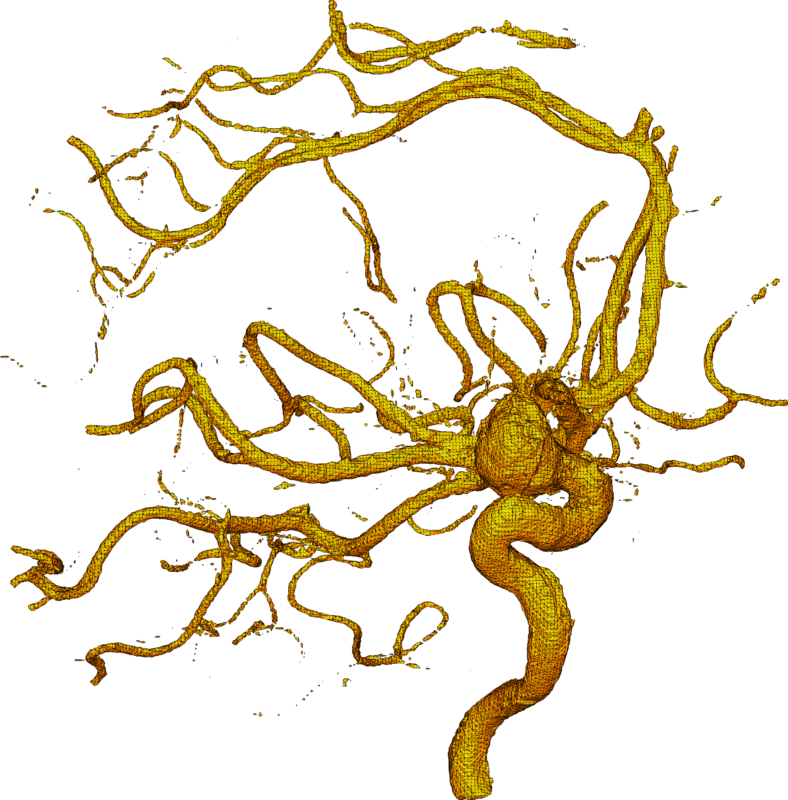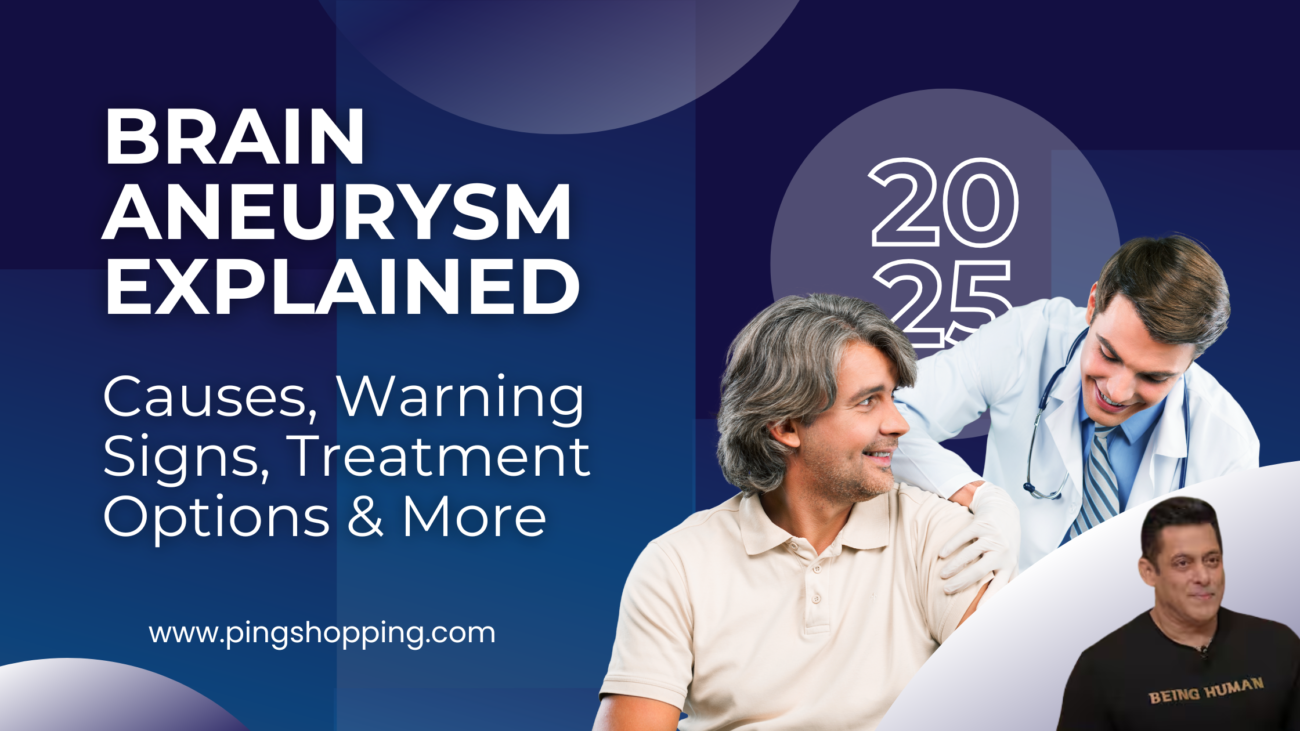Recently, a renowned Bollywood actor, Salman Khan, opened up about his battle with three serious neurological conditions – brain aneurysm, AVM, and trigeminal neuralgia. In the Kapil Sharma show aired on 21st June, he talked about how he has been diagnosed with all of them. While all of the mentioned conditions are serious, we are going to focus here on brain aneurysm, its causes, and effects to make our beloved readers aware of it.

Table of Contents
What Is a Brain Aneurysm?

A brain aneurysm, also known as a cerebral aneurysm, refers to a cerebrovascular disorder that contains a weak or thin spot on a blood vessel in the brain. It bulges out or balloons and gets filled with blood. Over time, this can grow and may cause internal bleeding in the brain (hemorrhagic stroke). Many times they go unnoticed, that’s why it is sometimes called a silent killer too.
Types of Brain Aneurysms
- Saccular: It contains a rounded sac filled with blood that bulges from one artery’s side. It is also called “Berry” because of the same structure as a hanged berry from a vine. Adults suffer most from this condition, and it commonly occurs at the base of the brain.
- Fusiform: This spares no side of the brain, and bulging can spread in multiple directions of the artery.
- Giant: As the name suggests, it has a wide neck, and the bulge can grow up to 2.5 cm in diameter. Sometimes, more than one artery can be affected in this situation.
- Traumatic: Traumatic brain aneurysms are caused due to a close head injury or penetrating trauma.
- Mycotic: If the bulging of the blood vessels happens because of fungal or bacterial infections, then it can be called Mycotic Brain Aneurysms.
Symptoms of Brain Aneurysms
Identifying the condition is too difficult because the symptoms aren’t visible initially until the leak or rupture happens. However, some unruptured aneurysms may put pressure on nearby tissues and nerves, resulting in the following symptoms:
- Severe headache (worst headache of your life)
- Blurred or double vision
- Pain above or behind the eye
- Dilated pupils
- Neck pain or stiffness
- Loss of balance or coordination
- Drooping eyelid
- Photophobia (sensitivity to light)
If a rupture occurs, immediate medical attention is critical because a burst aneurysm can cause:
- Paralysis or weakness on one side of the body
- Loss of consciousness
- Seizures
- Nausea and vomiting
- Confusion or speech difficulty
How Is a Brain Aneurysm Diagnosed?
Nowadays, recognizing unruptured aneurysms has become easier with the help of modern imaging techniques. Some of the common diagnostic steps include:
- CT Scan (Computed Tomography) for detecting the bleeding
- MRI (Magnetic Resonance Imaging) to locate unruptured aneurysms.
- Cerebral Angiogram for getting a detailed look at blood vessels in the brain
- Lumbar Puncture to detect blood in cerebrospinal fluid.
Post-Diagnosis Lifestyle
Recovery depends on whether the aneurysm ruptured and how quickly it was treated. The only difficulties you may have to deal with after the diagnosis of a ruptured aneurysm are:
- Cognitive difficulties
- Speech and movement problems
- Memory loss
- Emotional and psychological challenges
There are some rehabilitation processes to include in your daily life to combat the above effects, such as physical therapy, speech therapy, and psychological counseling, to regain your quality of life.
Can they be prevented?
While not all aneurysms can be prevented, you can significantly reduce your risk by following these steps:
- Quit smoking
- Manage blood pressure and cholesterol
- Exercise regularly
- Eat a balanced diet
- Limit alcohol intake
- Get regular checkups
Treatment Options
1. Observation and Monitoring
Small and unruptured aneurysms will need regular monitoring and some lifestyle adjustments. These can save you from the potential risk of facing
2. Medications
Some over-the-counter medicines can aid in managing blood pressure, cholesterol, and blood clot prevention to avoid rupture.
3. Surgical Clipping

The doctors can also recommend you metal clip placement at the base of the aneurysm to prevent blood flow and ruptures.
4. Endovascular Coiling
Endovascular Coiling is a minimally invasive procedure where a doctor will insert a catheter through an artery, and coils are put in the aneurysm.
5. Flow Diversion Devices
Stents placed in the artery can redirect the blood flow away from the aneurysm to promote healing.
Final Thoughts
These kinds of neurological conditions can go unnoticed most of the time. If not recognized in the initial stage, they can have an adverse impact on your life. Brain aneurysms can turn deadly in some cases, so it’s important to manage them before it’s too late. Raising awareness, understanding the symptoms, and taking preventive measures are the best ways to handle it. So, if you are suffering from severe headaches or other neurological symptoms, then don’t ignore them. Seek a doctor’s help immediately. Keep reading Pingshopping.com for more.





